October: Our park’s peak people month
Frontenac State Park Association newsletter
Vol. 1, No. 7, October 2023

# October: Our park’s peak people month
October is “by far” the most popular month to visit Frontenac State Park, head ranger Jake Gaster tells us. It’s easy to see why. Fall colors are at their peak, with sumac, maples and other deciduous trees ablaze with beauty.
Now that the oppressive summer heat has eased and there’s been a bit of late-September rain, the park is even more appealing.
Park attendance follows rough patterns each year, as the chart below shows. The COVID-19 era, terrible for almost everything else, boosted park visits. This year’s overheated summer brought a dip in attendance, but we bet it’ll go up now that fall has arrived.

Speaking of our trusty ranger Jake, here are a few news tidbits he shared with us:
The lengthy and troublesome Hwy. 61 detour that made it hard to get to the park from all directions should have ended by Oct. 1, though one-lane closures may continue for a while. If you’ve been driving in the area over the past few weeks, you’ll know what a relief that is.
The track-chair program we wrote about last month, which offers people with disabilities full access to park trails, has been hugely successful, Jake reports. As of the last week in September, this awesome vehicle had been reserved 24 out of the last 45 days, “and the feedback we’ve gotten from users has been remarkably positive and very humbling,” he said. For more information on the chair and how to reserve it, see our September newsletter or go here.
Where do we stand on this year’s drought, recent rains and plans for controlled burns? Says Jake: “The drought effects will be significant [even with recent rains]. We are expecting the fall colors season to be shorter than normal. As for a burn season, it is questionable whether we will even have a window to burn ... though that will be determined heavily by the rain we get over the next month or two. We have several [park areas] on the docket for fall burns, but will delay them to next year if conditions are too dry. We won’t take any undue risks just to get a fall burn.” Late-September rains could change conditions – stay tuned to see if October brings some relief!
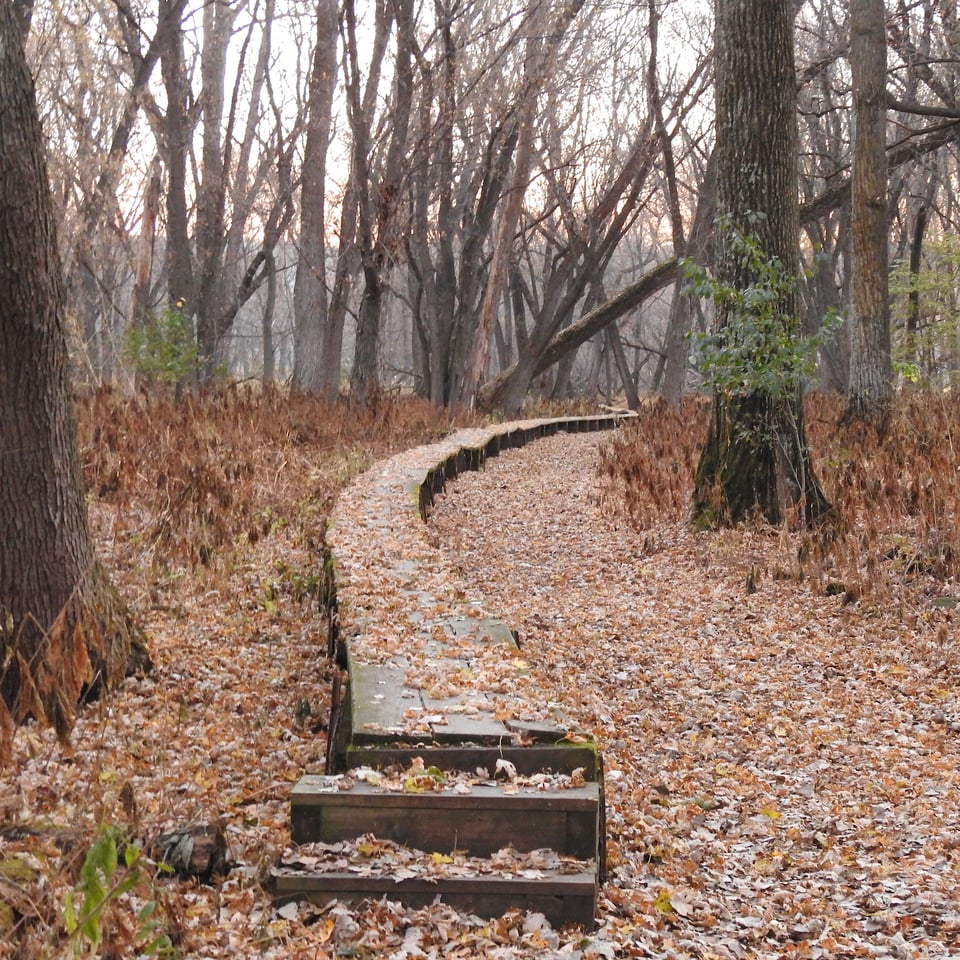
Programmed activities drop off a bit in October as the park focuses on simply welcoming visitors. But your Frontenac State Park Association will continue its volunteer work, collecting prairie seeds, monitoring trails and other activities. Here are our October events:
A guided bird walk will explore the Sand Point Trail on Saturday, Oct. 7. Meet in the Hwy. 61/County Road 2 parking lot/rest stop by 8 a.m. We’ll walk through the riparian forest and along the shoreline and hope to see fall migrating warblers as well as resident birds, including waterfowl, terns, gulls and shorebirds. The 2-mile loop is flat and well-maintained. This walk can take two to four hours, depending on how many birds we see, but you can leave at any time. Bring your binoculars. No need to register, but if you have questions, email janetmalotky@gmail.com.
And you can still catch Saturday morning hikes with interpretive naturalist Bruce Ause through October. Bruce’s walks depart from the park’s new shower building at 10 a.m. sharp every Saturday this month.
And a couple of heads-ups for November:
A hands-on lesson on removing buckthorn will be held at the park at 10 a.m. on Saturday, Nov. 4. “Invasive Species Management: Buckthorn Removal” is a free, family-friendly event on removing that darned buckthorn from the wild – AND from your yard. Meet at park headquarters at 10 a.m., then we’ll hike to the work site. Please wear gloves, tear-resistant clothing and sturdy footwear. And if you own a lopper, bring it along.
Frontenac State Park Association will hold its quarterly meeting at 3 p.m. Thursday, Nov. 16, at the park’s main picnic shelter. This meeting will focus on planning for next year. All are welcome.
Profile: Bruce Ause, a priceless park perennial
By Pamela Miller, Minnesota Master Naturalist Volunteer
During a recent interview in his Wacouta home, Bruce Ause, who for years has led popular Saturday morning interpretive walks for park campers and visitors, solemnly addressed a number of weighty topics, from park history to climate change.
Then I asked him this question: What’s your favorite creature in the park?
Bruce pondered a moment. “Oh,” he said, “I think the turkey vulture.”
(The turkey vulture? Really? I thought.) “Why’s that?” I asked.
Well, said Bruce, because it allows him to tell this story:
“A turkey vulture arrived at the Minneapolis airport security line with two dead animals. But he had to leave, because they said he could only have one carrion.”
Ho boy.
If you’ve been on any of Bruce’s Saturday morning walks, you may have heard that joke, and many others that you don’t see coming till he drolly drops them. Bruce’s dry wit is but one delightful aspect of his quiet, understated, wise demeanor as he leads park visitors along a circular path near the park’s campground. On a recent walk, he shared his knowledge of bluebirds, sumac, cottonwoods, invasive species, and yes, turkey vultures.
Bruce, now 79, retired in 2000 after 30 years as director of Red Wing’s Environmental Learning Center. He has been leading park walks for more than 20 years, with a hiatus during the COVID era.
Born in Harmony, Minn., Bruce graduated from Winona State, followed by three years as a biology teacher in Aitkin, Minn. During the summers, he served as an environmental educator at the Long Lake Conservation Center, and realized he loved that kind of work best. After earning his master’s degree in natural sciences/ecology at the University of Oklahoma in Norman in 1970 – the year Earth Day began – he was about to take an environmental education job near Paynesville, Minn., when the superintendent of Red Wing schools reached out to him with a query about starting an environmental learning program in Red Wing.
It was the beginning of a fascinating 30-year career for Bruce. “Watching young people grow in their interests and abilities – not just in relation to the environment, but in all ways – was the highlight,” he said. “Most of these kids would stay with the program for four years, and were really into it, which made them great to work with.”
His ELC work occasionally brought him to Frontenac State Park, where he taught young people to cross-country ski – not yet a big sport in the 1970s – using old wooden Army surplus skis. “We made our own trails, and it was the perfect place to learn,” he said.
Bruce still regularly cross-country skis and canoes, and his three grown daughters and three grandchildren share his passion for nature.
Asked which Frontenac State Park trails he likes best, Bruce said he loves the Rattlesnake Bluff path. From its northwestern ridge, he can see, among other nearby sights, his own house. “It’s a beautiful trail,” he said. “You’re truly in the wilderness up there.”
He also loves the Sand Point trail for its floodplain fauna and flora, as well as the well-traveled path, some of it paved, from the park’s picnic area to the Eagle Point overlook, where he likes to sit on the rustic bench and watch for eagles above and below.
Bruce also highly recommends the trails in the park’s latest addition, which lead to an overlook above Frontenac Station (New Frontenac) that offers a different view from other park overlooks – to the south and west, toward Lake City and points south.
Frontenac State Park is unique in its biological diversity, he said. “It’s in the transition zone between the woodlands of the East and the prairie of the West, and you see that in so many areas.”
Over the years, he has noticed some changes that may be related to rapid global warming, though he cautions that climate change is best evidenced in patterns, not in individual weather events. “Climate change has most impacted our waterways, with low water levels, and it shows up most dramatically in unusual weather events, like rain and lots of thawing and freezing in the winter that screw up the hydrology of the area.”
It’s hard to describe how endearing and captivating Bruce’s quiet approach to environmental education is. Experience it yourself on one of his Saturday morning walks, which start at 10 a.m. from the park’s new shower building. (Those run through the end of October, and will resume in May.)
Bruce wanted to be sure that we’d allow him to express some thanks here: to his wife, Kathy, and his family for all the support they’ve provided for his life of environmental endeavors, and to Red Wing Shoes and the community for its support of the Environmental Learning Center for 50 years.
For our part, we thank Bruce for all he has done as an environmental educator and community activist on a number of fronts. Most of all, we appreciate his continued contributions to Frontenac State Park.



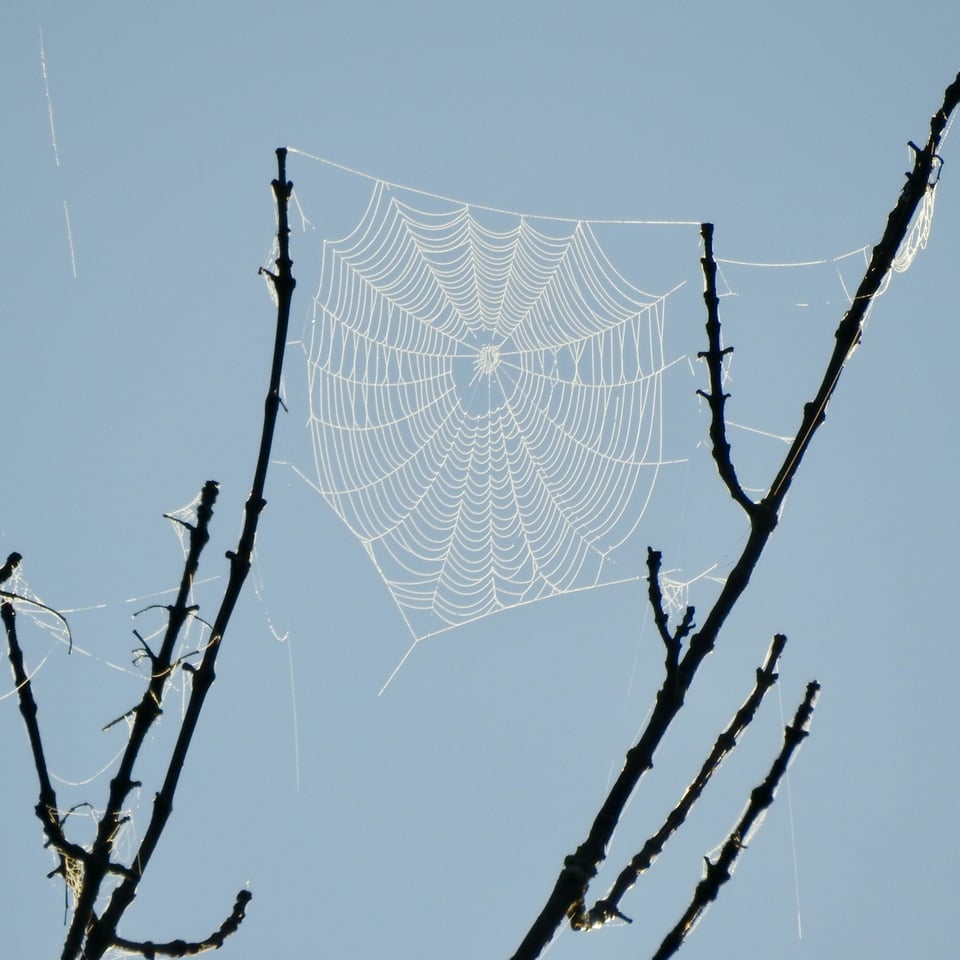
Notes from the field: The beavers’ $2.7 million gift
By Steve Dietz, Minnesota Master Naturalist Volunteer and FSPA president
Ok, let’s just acknowledge this from the outset: The story we’re about to tell is complicated. But wait till you hear its outcome! It all started with a lakelet and a dam problem. Then, nature, in the form of – well, read on – came to the rescue.
The problem
The water level in Pleasant Valley Lakelet, aka Frontenac Pond, much of which is within the boundaries of Frontenac State Park, was low enough this summer to threaten the survival of the fish population over the coming winter.

The history
Frontenac pond did not exist in an 1890 survey, but it did appear in a 1938 aerial survey photo. Over the ensuing 85 years, its area and depth has varied, such that in the early 2000s the DNR was receiving complaints that the water level was too high. Yet by 2020, it was fielding concerns about low water levels and whether they imperiled the pond’s successful fishery.
To address those concerns, a temporary dam was installed just below the outlet of Frontenac Pond in June 2020. It had its first failure 6 months later and its second in spring 2021. In 2022, a repaired dam was lowered because of concern about the height of the water at the dam head. In the spring of 2023, the dam failed again. Then, in June 2023, an unauthorized and poorly executed “repair” needed to be removed.
The culprit
As noted above, it’s complicated. But from 1983 through 2020, two sand terraces much farther up on Wells Creek eroded, resulting in about 825,000 cubic yards of sediment flow. (For reference, the dredge pile at Read’s Landing is currently about 580,000 cubic yards.) This added about 6 feet of elevation over the entire lower Wells floodplain below Frontenac Pond. The result was a kind of damming of the pond which, by 2000, raised its water to a level of concern. In 2019, however, a flood washed out much of the floodplain, increasing Frontenac Pond’s outflow and lowering water levels to as little as 2 feet. Hence the current concern for its fishery.

The solution
The DNR has a Wells Creek Watershed Sediment Reductions Strategies document, which you can read here. In total, it would take more than $10 million and likely decades to accomplish. Just to restore the creek below Frontenac Pond has a price tag of up to $2.7 million.

Fortunately, local anglers are not the only concerned “citizens.” A beaver family has been happily enjoying the flora of the pond and its perimeter for the past 3+ years. A low pond, however, creates mudflats that are not a great food source, make it difficult to float downed trees and branches, and alarmingly, expose the underwater entrances of their lodge to predators.

Perhaps fed up with all the failed, stopgap solutions over the years, within a month of the latest human dam’s deconstruction, the beavers built their own damn dam and are maintaining it assiduously. (So far.) The waters of Frontenac Pond are rising! All at almost no cost to the taxpayer!! $2.7 million not (yet) spent.!!!
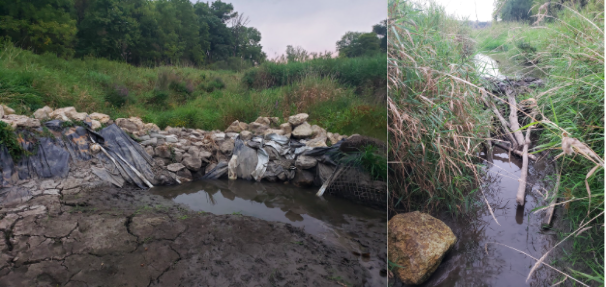
Will it last? Will the fishery survive the winter? Stay tuned, but this is definitely not Mission Accomplished.
In the meantime, as you hike along the park’s pond trail, enjoy an evening kayak ride or drop your line at the annual Frontenac Sportsman’s Club Ice Fishing Contest, spare some gratitude for the beaver clan and its ecological services.
Bird notes: On the hunt for snipes – for real
By Janet Malotky, Minnesota Master Naturalist Volunteer
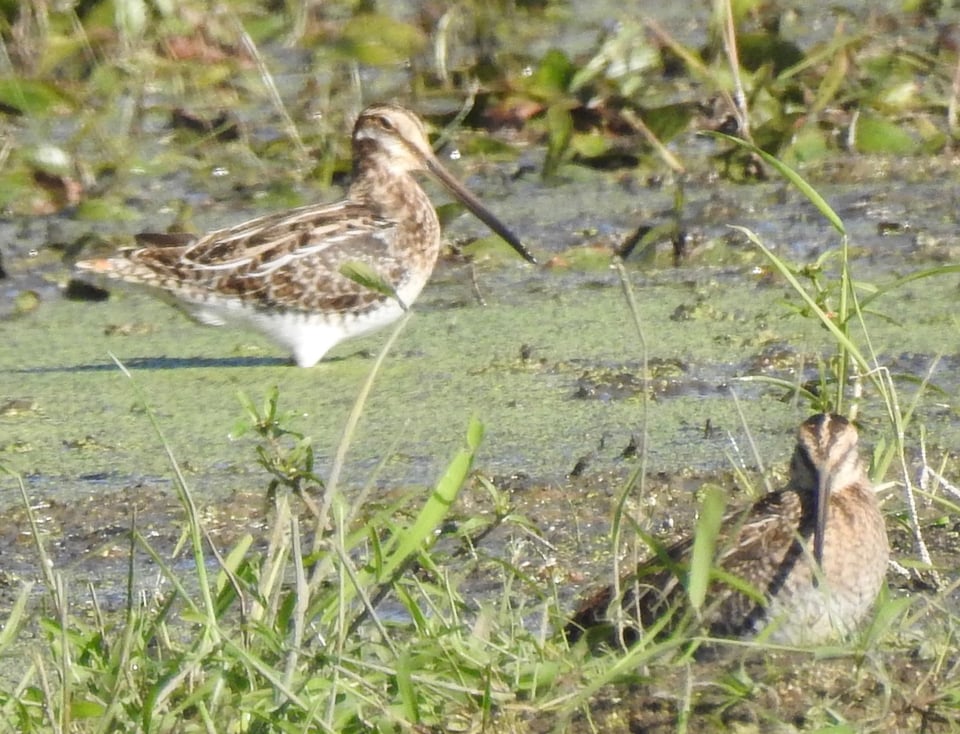
Try not to giggle when you see a Wilson’s Snipe. Observing its ridiculously long bill, its weirdly located eyes, and its stripes and spots going every which way, you could be forgiven for smirking.
Instead, try to be psyched that you even got to see one of these secretive, robin-sized birds. Those stripes, you see, are excellent camouflage for the grassy wetland edges where snipes like to hang out. And those eyes allow the birds to see almost as well behind themselves as in front. So they are likely to see you and any other predators first and to dive into the reeds well before you see them.
In addition to their mad duck-and-cover skills, Wilson’s Snipes have additional superpowers. For example, when flushed, they fly in a unique (for birds), evasive zigzag pattern. Snipe hunting is legal in many states, and this flight pattern makes them tough to shoot. They can also fly over 60 miles an hour, unusual for pudgy little mudflat dwellers like themselves.
And those ridiculously long bills? They are not just hard fingernail-like stuff. They have touch sensors toward the ends like our fingertips, the better to feel for insect larvae and other invertebrate delights deep in the mud. And the tips are flexible. Snipes can open the tips while the rest of the bill stays closed. They can slurp up their prey without retracting their bills from the mud. Pretty cool, right?
Wilson’s Snipes breed in our area and very likely in Frontenac State Park. They’ve been seen drilling the mud around the beaver pond where the Sand Point trail emerges from the deep woods onto the beach. They make ground nests hidden in the reedy marsh edges, and their nests are a little fancier than the haphazard piles of sticks and weeds of other shore birds. The chicks are precocial, leaving the nest on hatching day. When they’re ready to go, the parents divide and conquer, with the dad taking charge of a couple of the oldest chicks and the mom taking the youngest. Off the two groups go, never to see each other again, as far as we know.
Wilson’s Snipes are widespread across the United States, Canada, Mexico, Central America, the Caribbean, and northern South America. Populations in the northwest U.S may stay put year round, but our Minnesota birds will migrate south for the winter. They’ll leave sometime in November, heading for the southern U.S. or points further south. Until they go, friends, happy Snipe spotting.
Opossums, oh my!: A fascinating creature, up close
By Pamela Miller, Minnesota Master Naturalist Volunteer
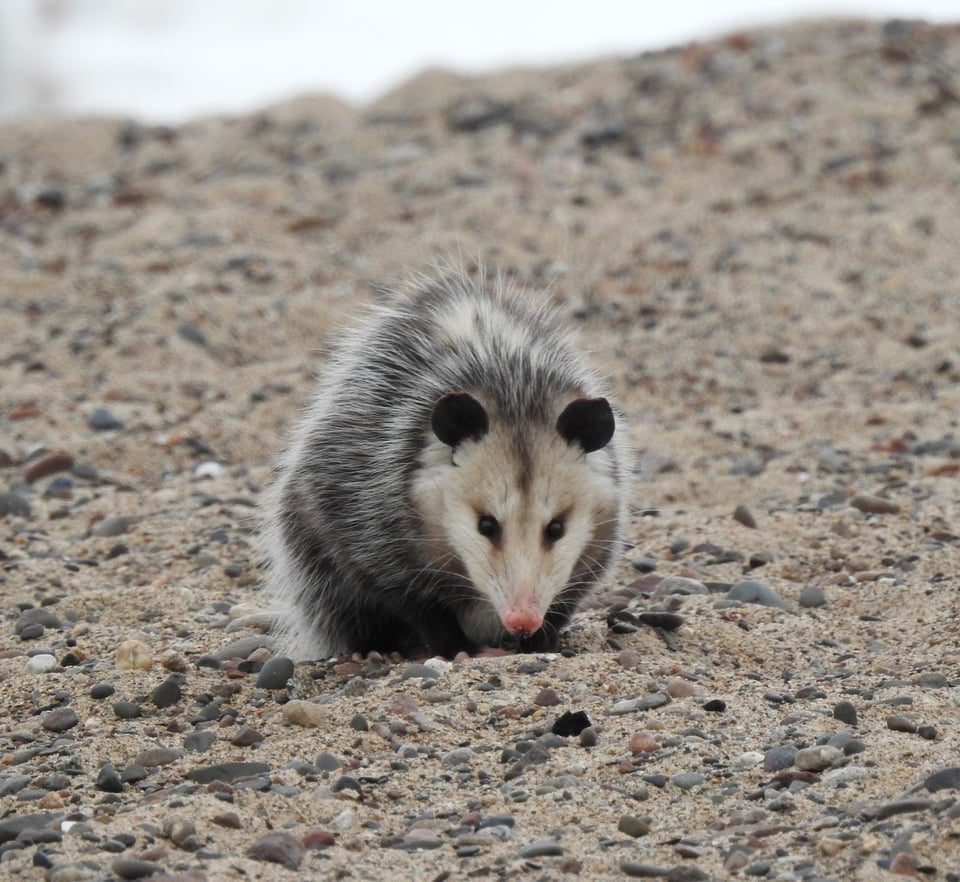
Of all the wild creatures visitors are likely to see in Frontenac State Park, the opossum (Didelphis virginiana) may be the least popular. That’s based on a (very) unscientific survey of frequent park campers and hikers. This scribe’s late mom, who grew up on a hardscrabble farm not far from Frontenac State Park in the 1930s and 1940s, was not alone in calling opossums, whose pointy noses, naked tails and tendency to bare their pointy teeth, growl and screech when cornered make them less than conventionally beautiful, “rat finks.”
Back then, Possum, there were far fewer opossums. Over the decades, for complicated reasons that may include warmer temperatures and habitat changes, more of them have moved north, so we see more in Frontenac State Park and nearby environs. But you won’t see many, at least not yet, in northern Minnesota, according to the Minnesota Department of Natural Resources. That’s because their naked pink nose, tail and ears are susceptible to freezing. Poor little rat finks!
Here are some other things to know about opossums, courtesy of the DNR:
They’re the only marsupial in North America. Yep, they’re cousins to kangaroos.
They’re nocturnal, and live in dirt burrows, hollow logs, brush piles, or under buildings. Like, under your deck.
They can weigh up to 15 pounds and stretch 3 feet from nose to tail. (Your scribe recently switched on her Old Frontenac patio light to let in a cat and jumped about 3 feet at the sight of a huge opossum out there eating fallen birdseed, oblivious to the light, your scribe and the cat.)
They are terrific climbers, using those long tails for balance on tree limbs.
They bear two litters a year of six to 20 – yep, that’s right, 20 – young. At birth, the babies clamber into their mother’s pouch, remaining there for up to 70 days. When they’re about the size of field mice, they ride around on their mother’s back for a few weeks.
Opossums eat, yeah, well, almost anything. Worms, snakes, insects (including ticks! lots of ticks), eggs, baby birds, fruit, grain, dog food, garbage and carrion. After eating these messy things, they tidy themselves up just like a cat does.
Fun fact, courtesy of the DNR: Opossums aren’t poisoned by rattlesnake venom. In fact, when confronted with a rattlesnake, they’re as likely as not to – eat the rattlesnake. (We don’t celebrate that, since timber rattlesnakes are endangered. Go after ticks instead, possums!)
What eats them? Coyotes, foxes, hawks and owls. A lot of them get trapped, too, or hit by cars.
Yeah, they play dead. When cornered, our little rat finks fall into a state resembling death and secrete a foul-smelling substance. Does this work? Sometimes, sometimes not. It’s safe to say it works with humans.
All wild things play a role in nature’s complicated web, and the opossum is no different. We can thank it for consuming creatures on the food chain below it, including our personal least favorite, ticks, and serving as sustenance for those creatures a notch above it in the food chain, including one of our favorites, the owl. If you see a rat fink in your campsite at midnight, give it a salute. (And, campers, a reminder to keep your foodstuffs well-secured, especially at night, or that dream you have about an opossum showing you its impressive teeth in the moonlight may not be a dream after all!)

What are YOUR favorite park sites and sights?
🌿We love telling you about our favorite things in Frontenac State Park. What are yours? We’d love to hear from you about your most treasured park sites, sights and experiences. Send your stories and photos to us at pamelamarianmiller@gmail.com and we’ll include some in future newsletters!
Things we like that you might like, too
Our favorite magazine: Minnesota Conservation Volunteer. If you’ve read it, you know why we love it. Every diminutive issue is packed with fascinating, evergreen photos and information, including some oriented toward children. Here’s how to subscribe.
Our favorite outdoor class: The Minnesota Master Naturalist program, offered by University of Minnesota Extension. There are three course tracks to choose from, each focused on one of Minnesota’s major biomes: “North Woods, Great Lakes,” “Prairies and Potholes,” and the one that focuses on our Driftless Area, “Big Woods, Big Rivers.” All guide students toward post-course volunteer experiences. Several FSPA members who have taken the third course at Whitewater State Park speak highly of it. Here’s more information.
Whooo might be interested in this?: World Owl Conference, Oct. 23-27 in La Crosse, Wis.: Organizers tell us the following: “The world is coming to our back yard! This is the first time there has been a World Owl Conference in the United States, and these conferences only happen every three to 10 years. The event will include research presentations from around the world, with heavy emphasis on North America and Europe and presentations on Short-eared Owls, Snowy Owls, and Burrowing Owls. Anyone can register to attend, and there are single-day and virtual registration options. Check out the conference website. (And a reminder that Minnesota’s own International Owl Center is nearby, in Houston County.)
Mushroom of the month: The marvelous maitake

It’s been a frustrating year for mushroom hunters, as drought has its way with us here in southeastern Minnesota. This summer, you’ve been lucky to find a two-bit, dried-up pheasantback (nothing wrong with pheasantbacks, also called Dryad’s saddle, but they’re everywhere, and pretty meh as edibles). But recent rains may unleash some of the year’s most interesting mushrooms, including hen of the woods – maitake (Grifola frondosa) – which many wild mushroom aficionados consider even more delicious than the coveted morels of spring.
In their excellent guidebook Mushrooms of the Upper Midwest (you can pick up a copy at the park headquarters’ little gift shop), Teresa Marrone and Kathy Yerich write, “The discovery of a large hen of the woods is a thrill for any mushroom hunter. Not only do the clusters often reach enormous proportions – 2 feet across is possible, or even bigger – but the mushrooms have a firm texture and meaty taste that is highly prized. They are also in high demand for medicinal uses in Japan, Korea and China.”
Novice mushroom hunters sometimes mistake turkey tails and other hard, inedible polypores for maitake. There’s truly little resemblance, though, and once you see and hold a real hen, you’ll never forget it.
If you’re lucky enough to find a fresh maitake (yep, they grow in the park), clean it as best you can in the field, and when in the kitchen, rip its rosettes into leaflike pieces and soak it briefly in salt water to extract any bugs. Saute it in butter and white wine, with a little garlic, and add to meat dishes, eggs, pasta or rice. Maitake also makes some of the best cream of mushroom soup on Earth.
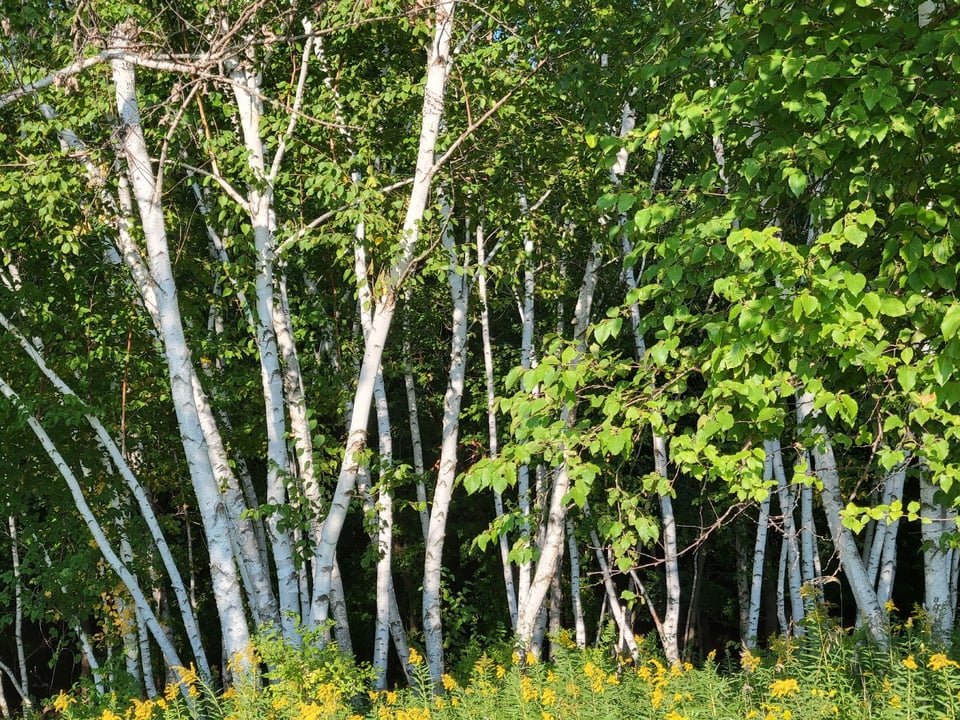
Poem of the month
“NOW BLUE OCTOBER”
By Robert Nathan (American; 1894-1985)
Now blue October, smoky in the sun,
Must end the long, sweet summer of the heart.
The last brief visit of the birds is done;
They sing the autumn songs before they part.
Listen, how lovely — there’s the thrush we heard
When June was small with roses, and the bending
Blossom of branches covered nest and bird,
Singing the summer in, summer unending —
Give me your hand once more before the night;
See how the meadows darken with the frost,
How fades the green that was the summer’s light.
Beauty is only altered, never lost,
And love, before the cold November rain,
Will make its summer in the heart again.
Parting shots
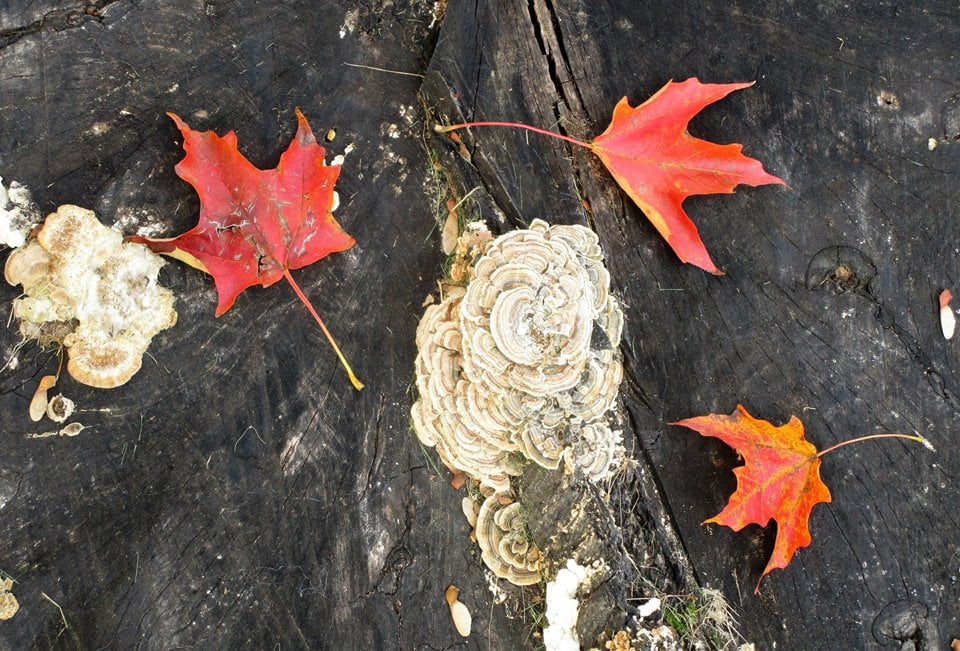
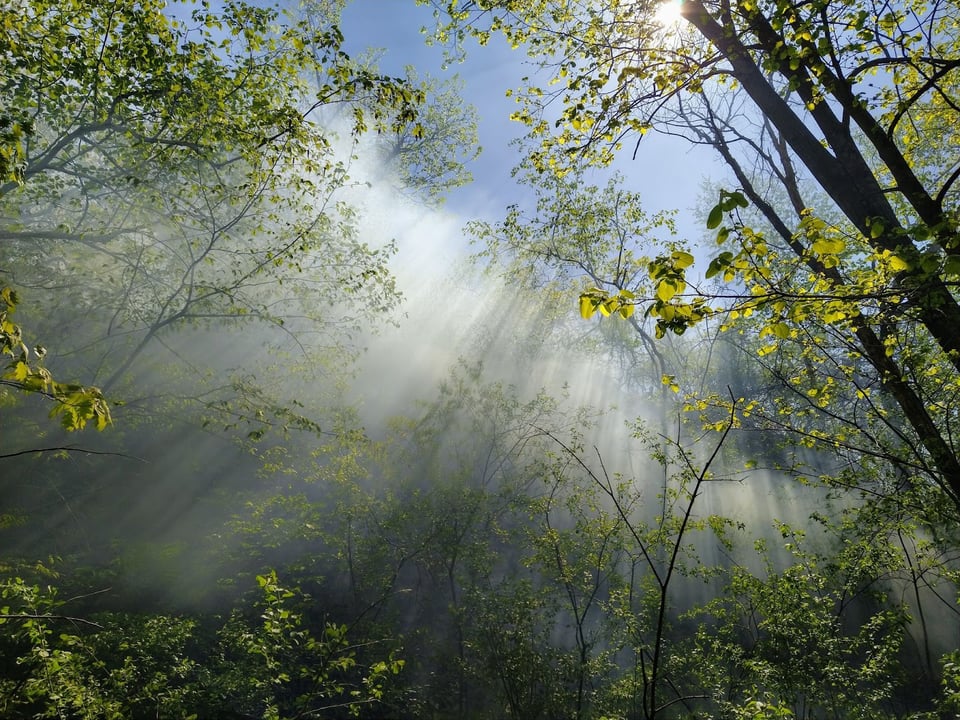
Interested in joining the FSPA?
We’d love to have your support (dues are $25 per year for an individual, $30 for a couple). Here is a link.
And coming occasionally to help out with volunteer efforts is awesome too, even if you’re not a member. The FSPA’s goal is simply to share our love of Frontenac State Park with as many people as possible.
To sign up to regularly receive this monthly newsletter, click on “Subscribe” below, and if you have questions or comments about it, email your newsletter editor at pamelamarianmiller@gmail.com. Questions about the FSPA? You can reach FSPA chair Steve Dietz at stevedietz@duck.com.
Handy links for more information and education
Frontenac State Park website
Frontenac State Park Association website
If you take pictures in the Park, tag us on Instagram
Frontenac State Park bird checklist
Frontenac State Park on iNaturalist
Parks & Trails Council
Website for our township, Florence Township
Minnesota Master Naturalist program
Red Wing Environmental Learning Center
Lake City Environmental Learning Program on FB
Frontenac State Park staff
Jake Gaster, park manager; Amy Jay, assistant park manager; Amy Poss, lead field worker
Thank you, readers and park visitors!